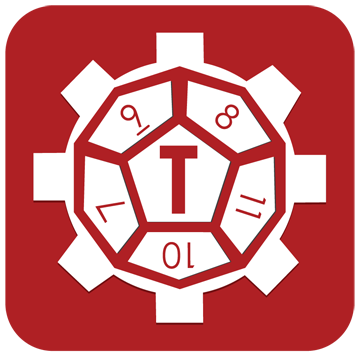Crowdfunding Campaigns Part 1: Planning
Posted by
Thorin Tabor
on Feb. 15, 2014, 4:29 p.m.
We’re currently in the middle of running the Against the Dark Yogi Kickstarter campaign. This is our second such campaign (the first was to Kickstarter our Ganjifa: Indian Playing Cards), and I wanted to talk a bit about everything that’s involved in running a crowdfunding campaign.
First, running a crowdfunding campaign takes a lot of planning beforehand. You have to not only have your main product in a state where it’s easily demonstrable, if not ready to go, but you also need to know what all your reward levels will be, how much any secondary rewards cost and have some inkling as to what sort of things you might have as stretch goals. You also need some inkling as to what your sales plans are after the Kickstarter is over.
I’m going to use our Ganjifa cards as an example throughout much of this post. We learned a lot from doing the Ganjifa Kickstarter, and there’s much that in retrospect we would have done a little differently.
When running our Ganjifa Kickstarter our primary product were the Ganjifa cards themselves. Secondary rewards we offered included T-shirts and prints of the card art. This all seemed simple enough to us at the time: The more decks we ordered the cheaper per deck we could get them printed. The T-shirts and prints were priced in such a way as to make us a little profit, and would help increase the dollar value of pledges, which meant we could reach our goal with fewer pledges necessary. Fewer pledges needed to meet our goal meant an increased likelihood of a successful crowdfunding campaign. Unfortunately, in practice things weren’t so cut-and-dry.
Let’s take a step back now and talk about pricing. When planning our prices we looked around at other specialty cards and decided that $15 was about right for a deck of our Ganjifa cards. This price was in line with other specialty decks - such as Tarot - and it seemed like a viable price point given our printing costs, provided we printed at least 500 decks.
Here’s what we didn’t take into account and really ought to have: wholesaling. You see, during the Kickstarter campaign itself, $15 was a viable price point for us. It allowed us to cover the cost of printing, packaging, shipping and have some money left to cover upfront costs, such as artwork. But after the Kickstarter what would be our sales plan?
Imagine you have a product that you want to be sold in stores. Typically the producer will sell the product to a distributer, who will sell it wholesale to a store, who will then turn around and sell it a retail to customers. As long as we were getting full retail value for the Ganjifa cards we were good to go, but after the Kickstarter if we wanted to sell in stores, we would need to be able to sell them at wholesale (to stores), or even below wholesale (to a distributer). That typically means selling them at about 40% of their retail value. Unfortunately, the $15 price point meant wholesaling was not a viable option for us, unless we printed 10,000’s of decks (and thus benefitted from economy of scale).
But we had our price point, and we knew roughly how many we would need to print for $15 to be viable during the Kickstarter. The next step was to set our fundraising goal.
In the end we settled on $7000. We knew we would need to cover our upfront costs, and would need to print at least 500 decks. For every deck sold if we subtracted printing, packing and shipping costs we would get the amount leftover that we could apply to covering our upfront costs. A quirk of this pricing is that we wouldn’t necessarily need to sell all 500 decks we printed to make a successful campaign, we would only need to sell enough that the post-printing/shipping leftover money would both cover the upfront costs and cover the remaining unsold decks’ printing costs. For us this meant we only needed to sell about 410 decks.
Doing some math, that brought us to about $6300 in decks sold (including a small safety buffer). But Kickstarter takes 5% of money earned, and Amazon payments takes another 5%. So we would need to set a goal where with 10% taken off, we would still have enough money left over to cover our costs. So $7000 it was.
I should note here that if we just barely hit $7000 we would be breaking even on the Kickstarter. The hope really was that we could shoot past our goal a bit and make a small profit. I should also note that if we just barely hit our goal and sold 410 decks we would still have roughly 90 left over decks already printed that we could sell after the Kickstarter for a small profit. The other area of profit would be in selling prints and T-shirts. For every one of these we sold that would be money towards the goal with fewer costs, meaning more decks left over for sale afterward at a profit.
In practice prints didn’t yield much, and T-shirts have even have hurt us. But that’s a story for another post.
Share Post
 Tab Creations
Tab Creations
0 Comments on Crowdfunding Campaigns Part 1: Planning
There are currently no comments
New Comment